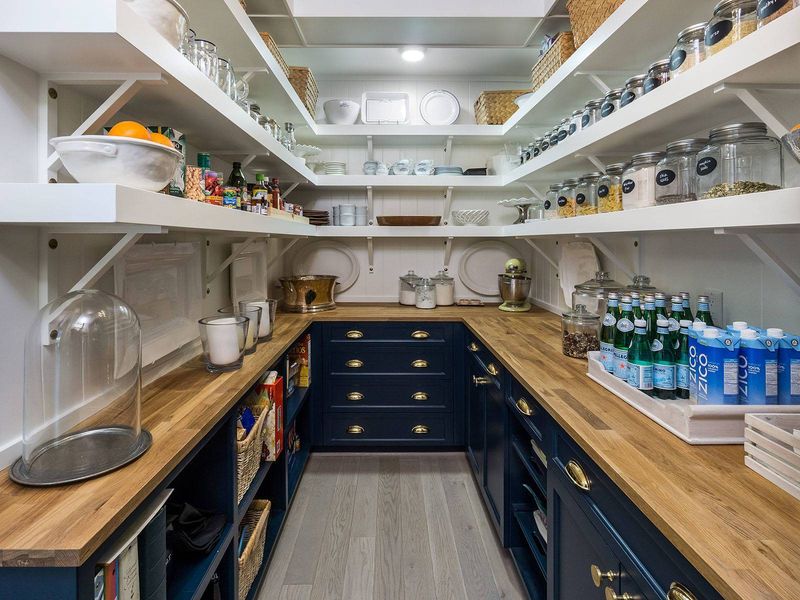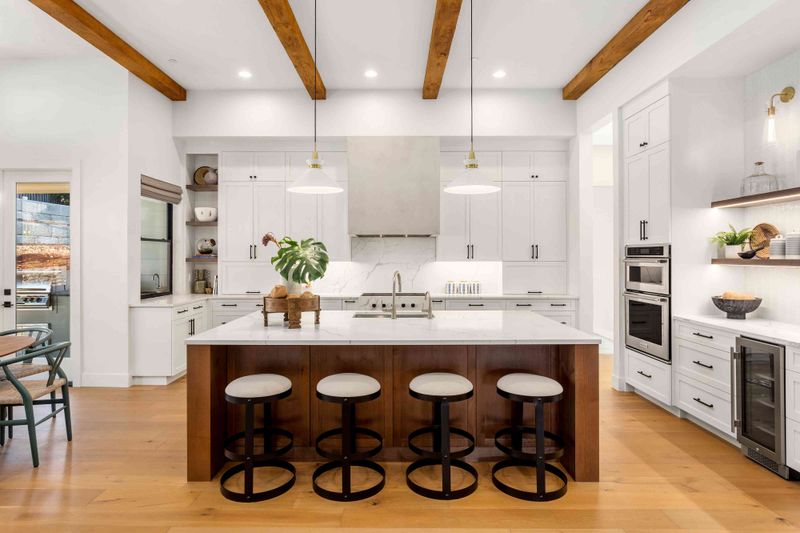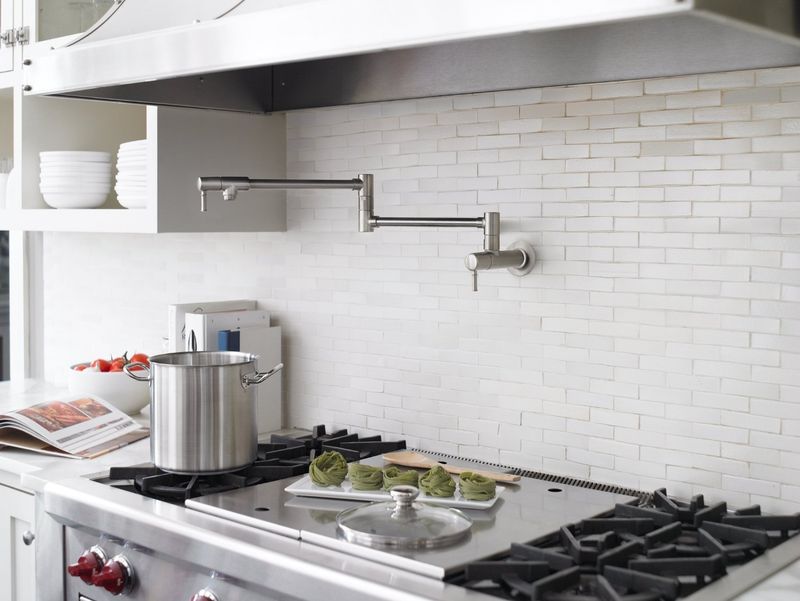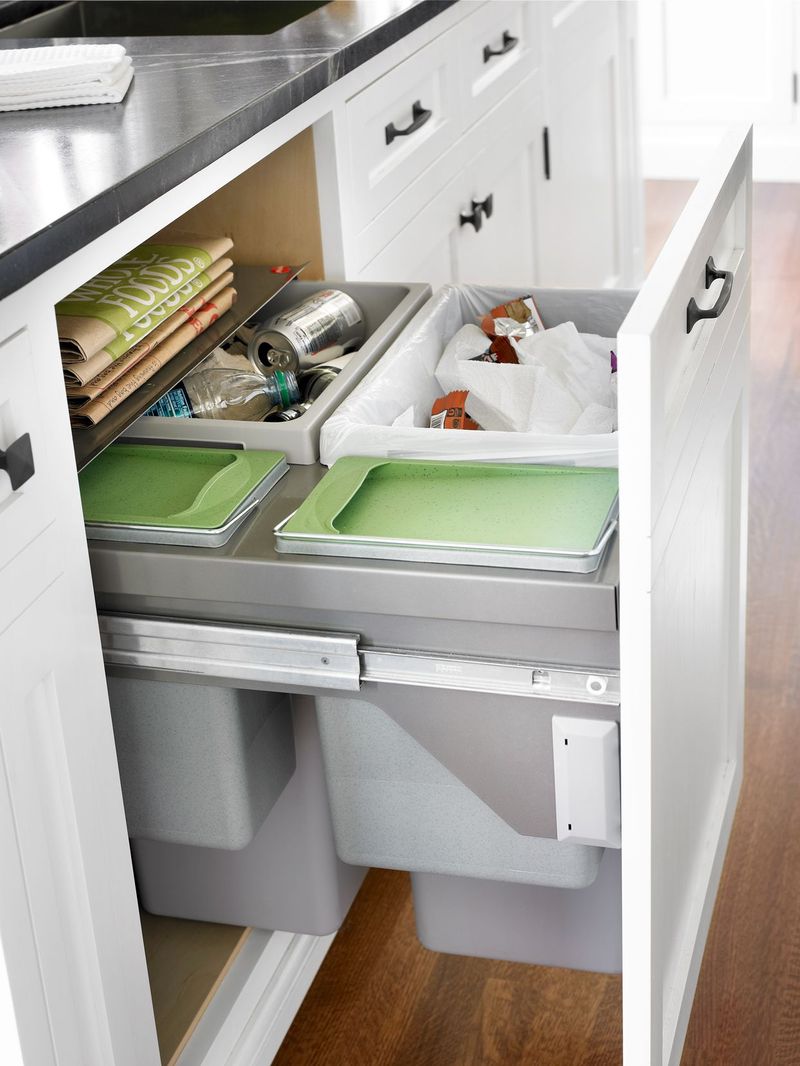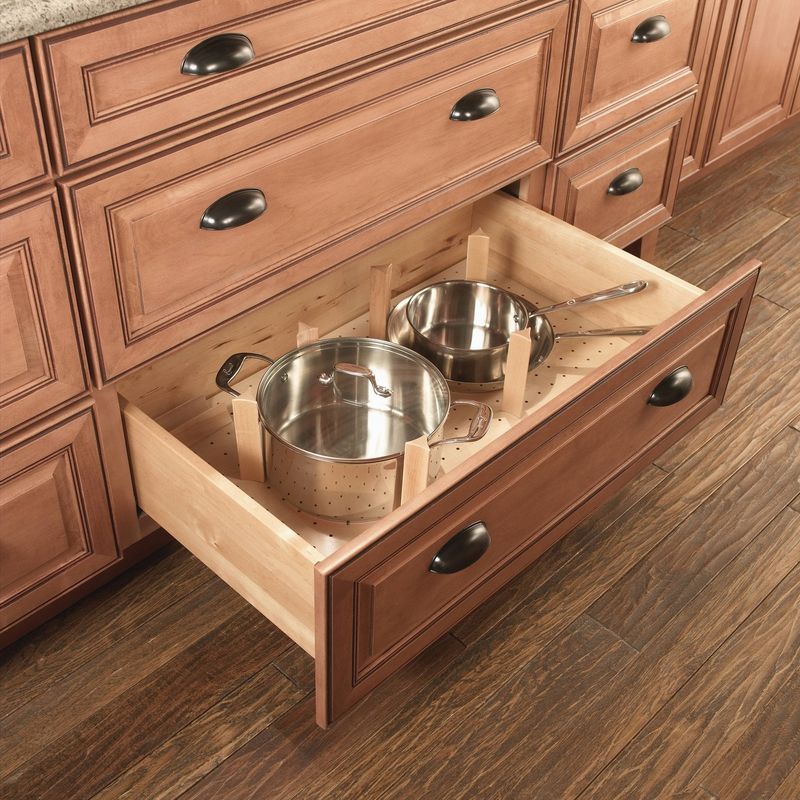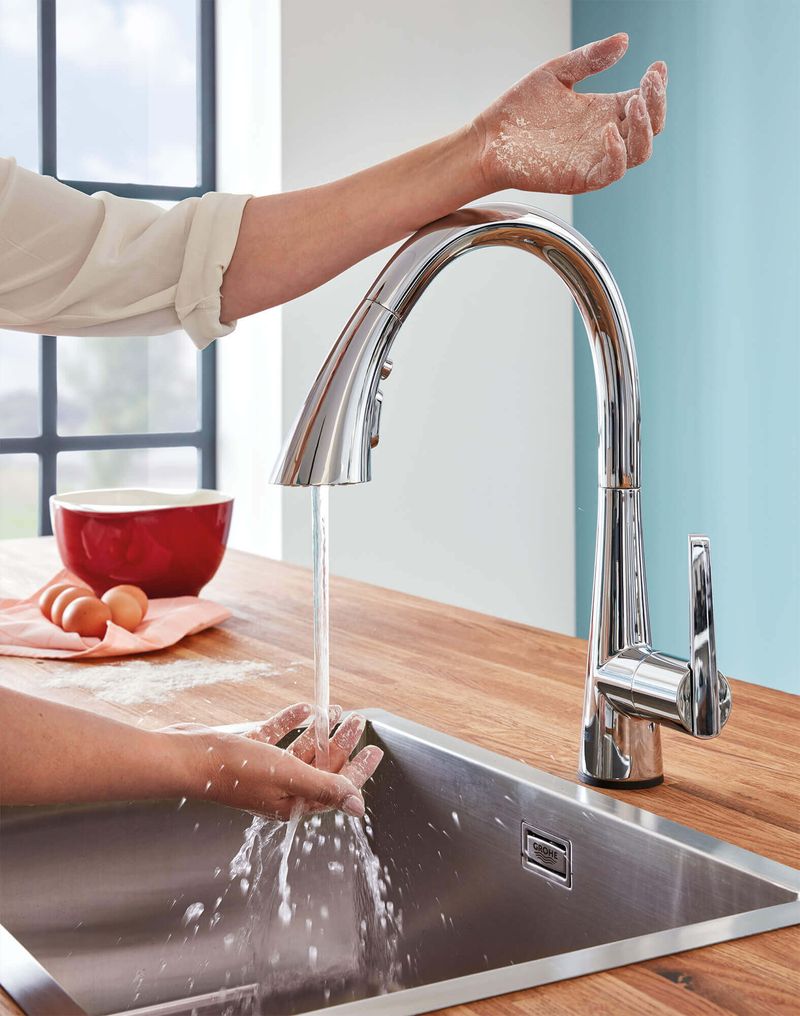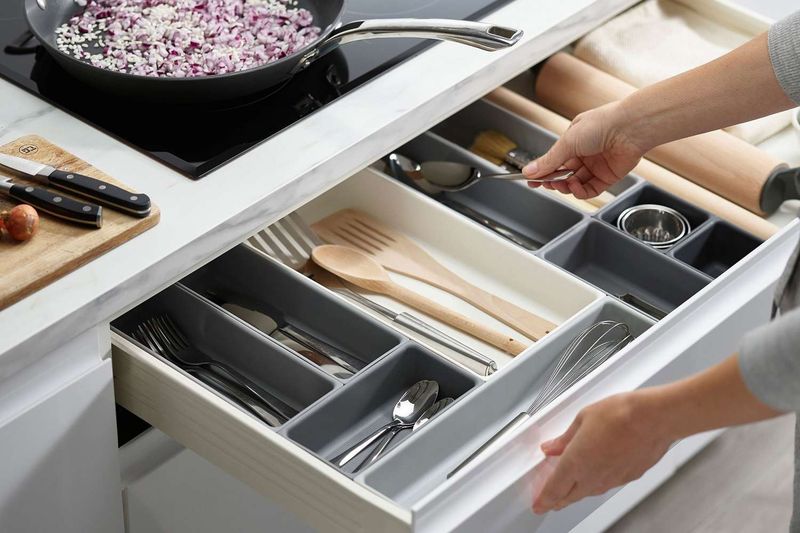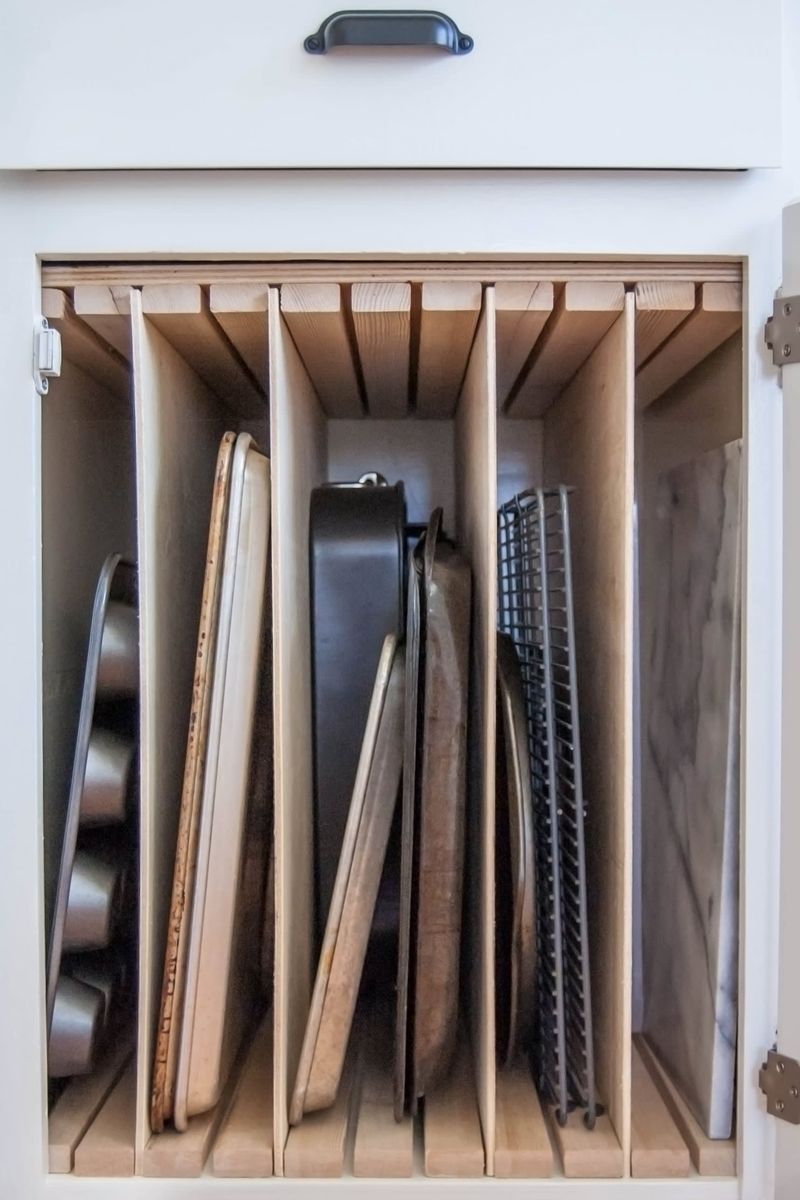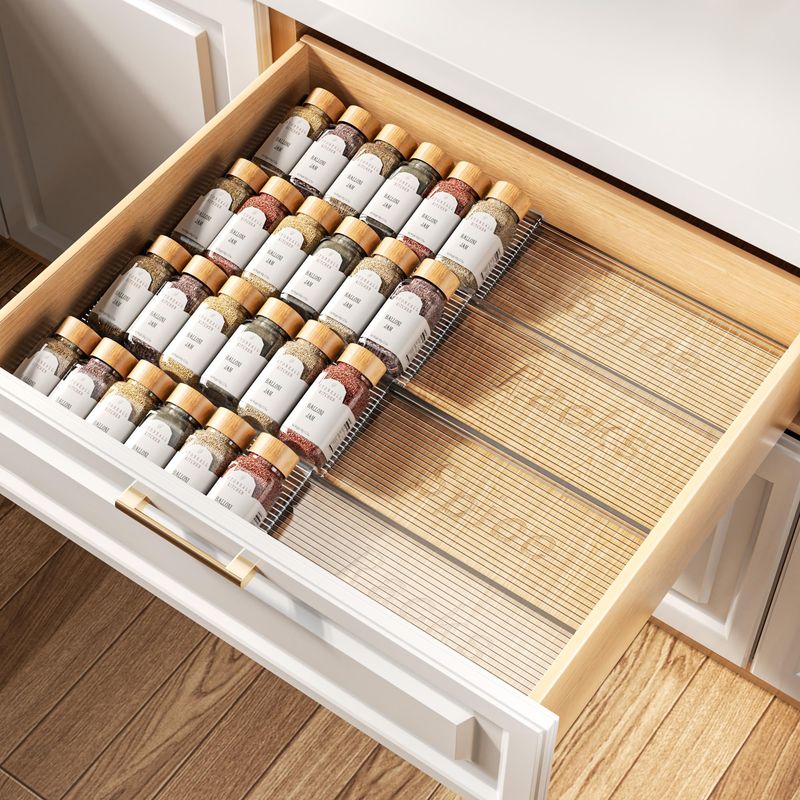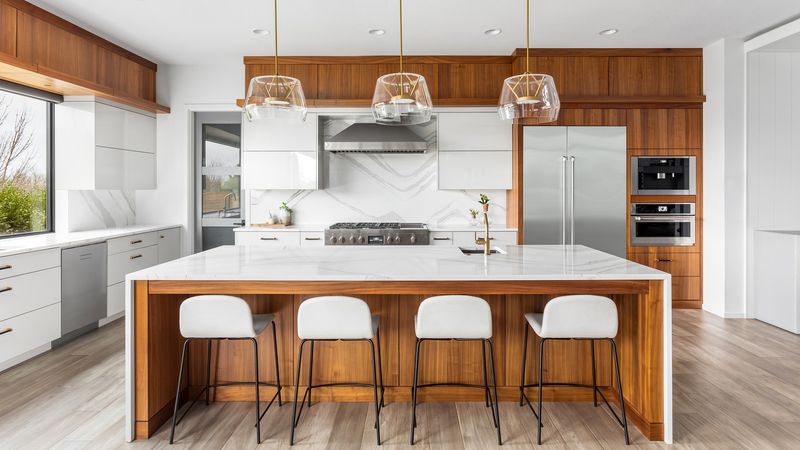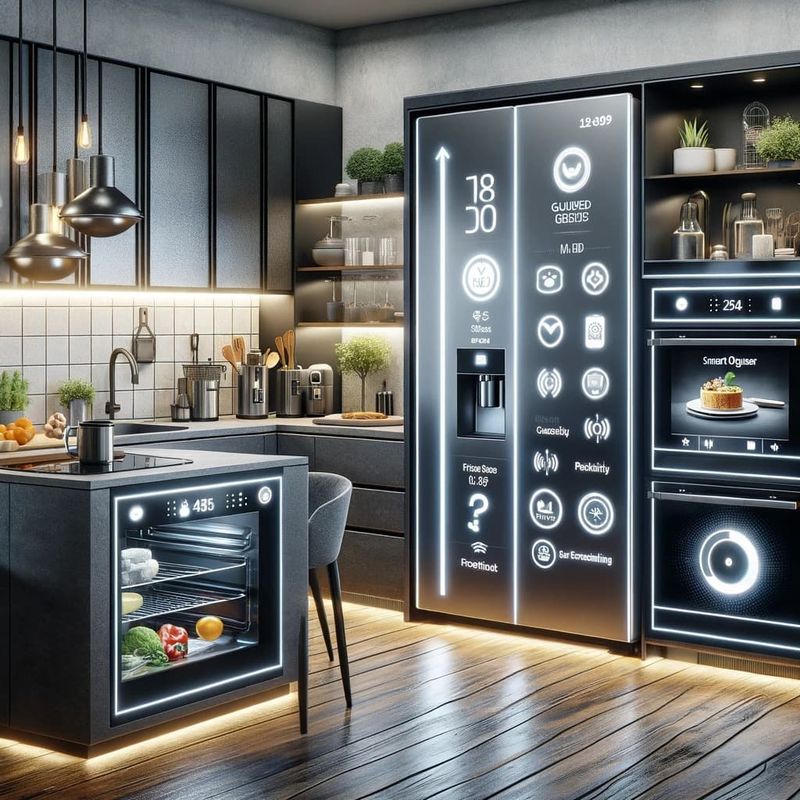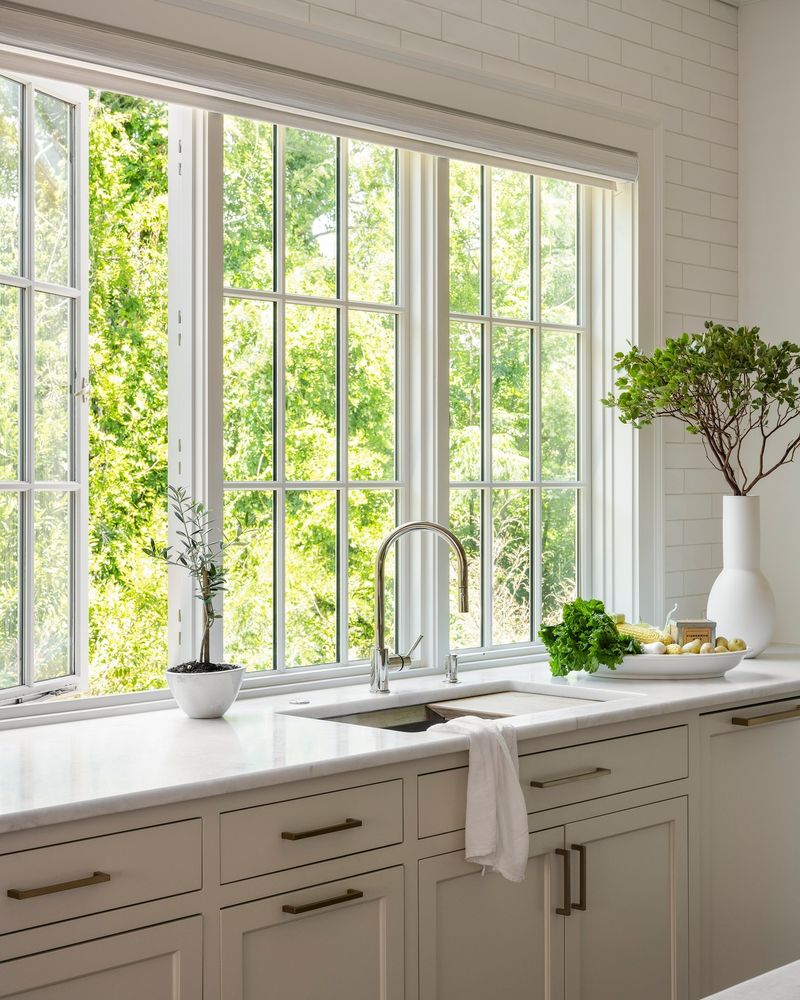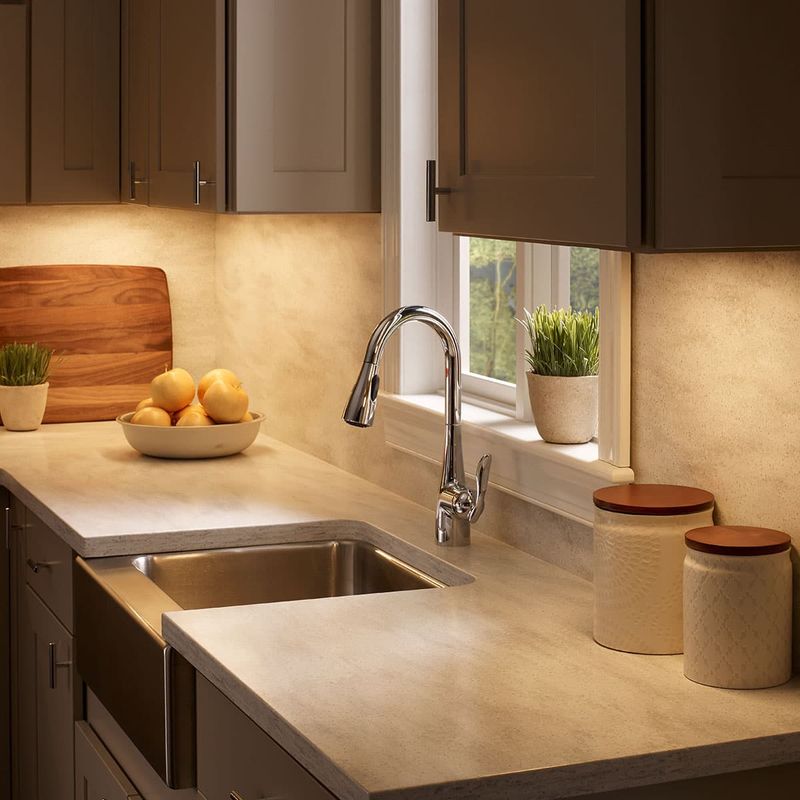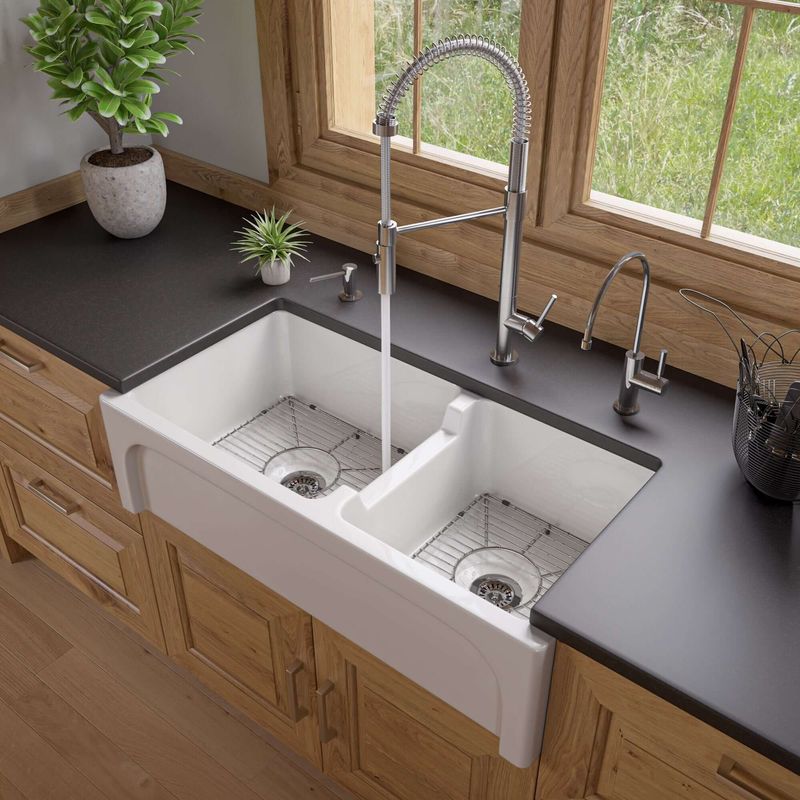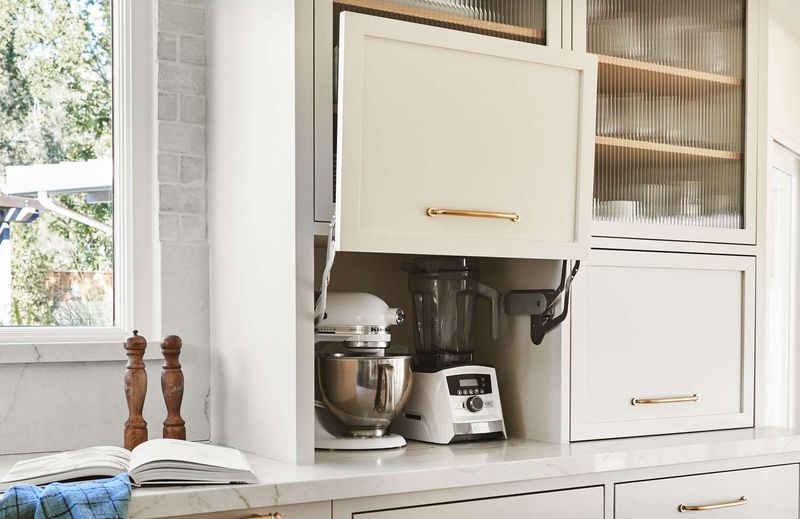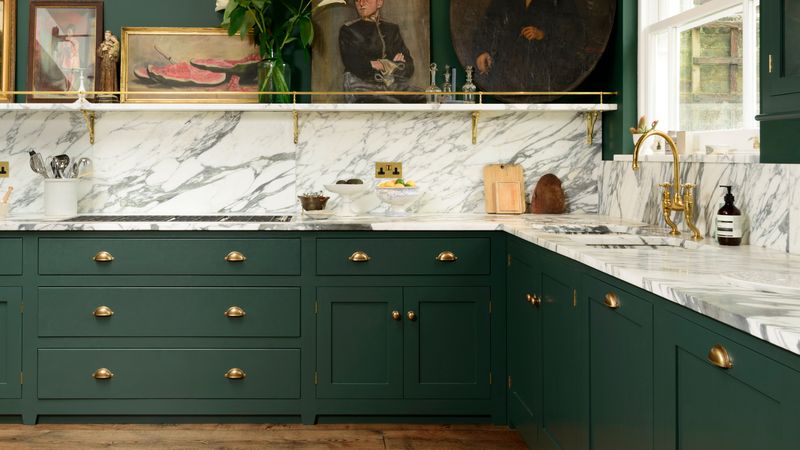Some kitchen elements do more than just work – they wow. Designers know exactly which features draw the eye and make a space feel elevated, no matter the size or style.
These aren’t just functional add-ons; they’re the details that make people stop and stare. These features bring personality and polish into the heart of the home.
Here are 10 kitchen details that always dazzle – plus 8 bonus ideas that take visual appeal to the next level.
1. Walk-in Pantry
Who doesn’t dream of a dedicated space for all those groceries and kitchen gadgets? A walk-in pantry eliminates clutter from your main cooking area, creating a more streamlined workspace.
With adjustable shelving and proper lighting, everything stays visible and accessible. No more forgotten ingredients hiding in the back of cabinets!
Many designers recommend incorporating both deep shelves for bulky items and shallow areas for canned goods and spices.
2. Kitchen Island with Seating
Gathering around while someone cooks creates those magical family moments we all cherish. Islands serve as multi-functional hubs where cooking, eating, homework, and conversation all happen naturally.
For maximum comfort, designers suggest allowing 24 inches of width per person and ensuring knees have plenty of clearance underneath.
Consider incorporating outlets, a small sink, or even a wine fridge to make your island truly the heart of the home.
3. Pot Filler
Gone are the days of lugging heavy water-filled pots from sink to stove! This extendable faucet mounted directly above your cooktop eliminates that awkward, sometimes dangerous transfer.
Though seemingly small, this addition ranks high on designers’ must-have lists for serious home cooks. Beyond convenience, pot fillers add an upscale, professional touch to any kitchen aesthetic.
When planning installation, ensure proper water pressure and consider a double-jointed arm for maximum reach across all burners.
4. Pull-Out Trash and Recycling
Nothing ruins beautiful kitchen design faster than a visible garbage can! Tucked-away waste stations keep unsightly trash hidden while making daily use convenient.
Forward-thinking designers recommend systems with multiple bins for trash, recycling, and even compost. The best placements are typically near the sink or food prep areas to minimize steps.
Soft-close mechanisms prevent slamming, while antimicrobial coatings on bins themselves help control odors and bacteria.
5. Quartz Countertops
Forget the high-maintenance marble of yesteryear! Today’s designers overwhelmingly recommend engineered quartz for its remarkable combination of beauty and practicality.
Unlike natural stone, quartz resists staining, scratching, and doesn’t require sealing. The material comes in countless patterns that convincingly mimic marble, granite, or concrete while offering superior durability.
Many homeowners appreciate that quartz surfaces are non-porous, making them naturally antibacterial and ideal for food preparation areas.
6. Deep Drawers Instead of Lower Cabinets
Say goodbye to kneeling on the floor, searching for that lost tupperware lid! Deep, wide drawers make accessing pots, pans, and storage containers infinitely easier than traditional lower cabinets.
Clever designers incorporate dividers and organizers to prevent items from sliding around. The most functional kitchens often feature a mix of drawer depths—deeper ones for larger items and shallower versions for utensils and linens.
Soft-close mechanisms protect fingers and prevent the jarring noise of slamming drawers.
7. Hands-Free Faucet
Messy hands covered in cookie dough? No problem! Touch-activated or motion-sensor faucets eliminate the need to grab handles with sticky fingers.
Beyond convenience, these fixtures reduce the spread of germs by minimizing contact with surfaces during food preparation. Many designers now consider them essential rather than luxury upgrades.
The latest models combine hands-free operation with pull-down sprayers and temperature memory, making everyday kitchen tasks significantly more efficient.
8. Drawer Organizers
Fumbling through jumbled utensil drawers wastes precious minutes every day! Custom inserts transform chaotic spaces into perfectly organized storage for everything from silverware to spices.
Professional designers insist on measuring items before selecting organizers, ensuring perfect fits for your specific collection. Wood or bamboo options add warmth while plastic or metal versions offer easy cleaning.
The most sophisticated kitchens feature dedicated spots for knives, cutting boards, and even specialized gadgets like garlic presses and zesters.
9. Vertical Storage for Baking Sheets
Hunting for the right baking sheet shouldn’t require emptying an entire cabinet! Vertical dividers create individual slots for cookie sheets, cutting boards, and muffin tins.
This simple organization method prevents scratches while making each item immediately visible and accessible. Many designers incorporate these dividers into narrow spaces beside refrigerators or ovens that would otherwise go unused.
The most effective versions include adjustable slots to accommodate different sizes of bakeware as your collection evolves.
10. Spice Drawer Near Cooking Zone
Finding the right spice instantly can make the difference between cooking success and frustration! Shallow drawers with angled inserts let you see every label at a glance.
Unlike traditional cabinet-mounted racks, drawer systems protect spices from heat and light that degrade their flavor. Design professionals emphasize placing these specialized drawers within arm’s reach of the primary cooking area.
For serious home chefs, custom-sized inserts accommodate both standard supermarket jars and specialty containers from gourmet shops.
1. Oversized Kitchen Island
Bigger truly is better when it comes to kitchen islands! Generous dimensions allow multiple cooks to work simultaneously without crowding each other.
Expert designers recommend a minimum of 36 inches between the island and surrounding countertops for comfortable movement. Beyond size, the most functional islands incorporate varied heights—standard counter level for food prep and slightly lower sections for comfortable seating.
Waterfall edges, where countertop material continues down the sides, add a sophisticated design element many professionals favor.
2. Smart Appliances
Your morning coffee brewing before you even get out of bed? That’s just the beginning of what today’s connected kitchens can do!
From refrigerators that track groceries to ovens you can preheat remotely, smart technology has transformed how we interact with our cooking spaces. Designers particularly value appliances that learn your habits and adapt accordingly.
When clients hesitate about the investment, professionals often point out the energy savings and convenience that quickly offset initial costs.
3. Dedicated Coffee Station
Morning routines become joyful rituals with a thoughtfully designed coffee nook! Separating this daily function from the main cooking area prevents congestion during busy mornings.
The most complete setups include water connections for automatic machines, proper storage for beans and mugs, and even small refrigerators for milk. Designers often incorporate adequate counter space for preparation and specialized lighting to create ambiance.
For homes where coffee culture is important, this dedicated zone quickly becomes the most cherished part of the kitchen.
4. Window Over the Sink
Washing dishes becomes almost enjoyable with a beautiful view! Natural light streaming in creates a cheerful atmosphere while performing otherwise mundane kitchen tasks.
Beyond aesthetics, windows provide crucial ventilation and make the entire space feel larger. Designers often suggest casement or awning styles that can open even with limited wall clearance.
For privacy concerns in urban settings, frosted glass or simple café curtains offer solutions without sacrificing the all-important natural light.
5. Under-Cabinet Lighting
Banish those frustrating shadows that make chopping vegetables feel like a guessing game! Strategic lighting beneath cabinets illuminates countertops perfectly, making food preparation safer and more pleasant.
LED strips have become the designer favorite due to their energy efficiency and slim profile. The warm glow they cast also creates a welcoming ambiance when overhead lights are dimmed for entertaining.
Smart installations include separate switches or even motion sensors for hands-free operation.
6. Double Sink
Imagine washing vegetables while dirty dishes soak in the other basin! This simple luxury makes food prep and cleanup infinitely more efficient.
Most designers prefer undermount sinks for their sleek appearance and easy countertop cleaning. The ideal setup includes one deeper basin for pots and pans, with a shallower one for food preparation.
Smart homeowners often add a cutting board that slides over one basin, instantly creating extra workspace when needed.
7. Dedicated Appliance Garage
Countertop clutter disappears like magic with this simple yet brilliant solution! Appliance garages keep frequently used items like toasters, blenders, and coffee makers accessible but hidden when not in use.
Modern versions feature pocket doors that slide away completely, eliminating the awkward swing of traditional cabinet doors. Some designers even incorporate outlets inside these spaces, allowing appliances to stay plugged in.
For clients with smaller kitchens, this feature maximizes usable counter space without sacrificing convenience.
8. Quality Cabinet Hardware
Like jewelry completes an outfit, hardware provides the perfect finishing touch to kitchen cabinetry! Substantial, well-crafted knobs and pulls feel satisfying in the hand while elevating the entire room’s design.
Designers frequently note that this relatively small investment dramatically impacts overall perception of quality. Mixed metals have gained popularity, with combinations like brushed brass and matte black creating sophisticated, layered looks.
For aging-in-place considerations, larger bar pulls provide easier gripping than knobs.


